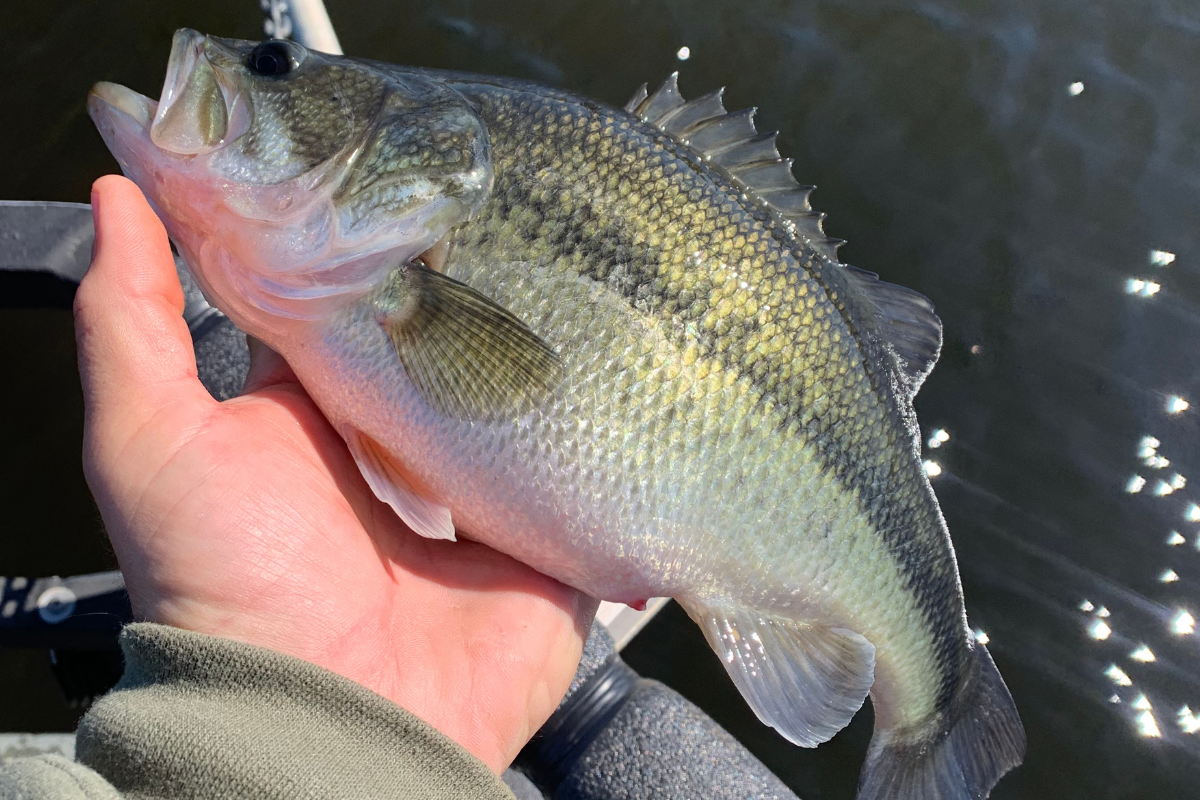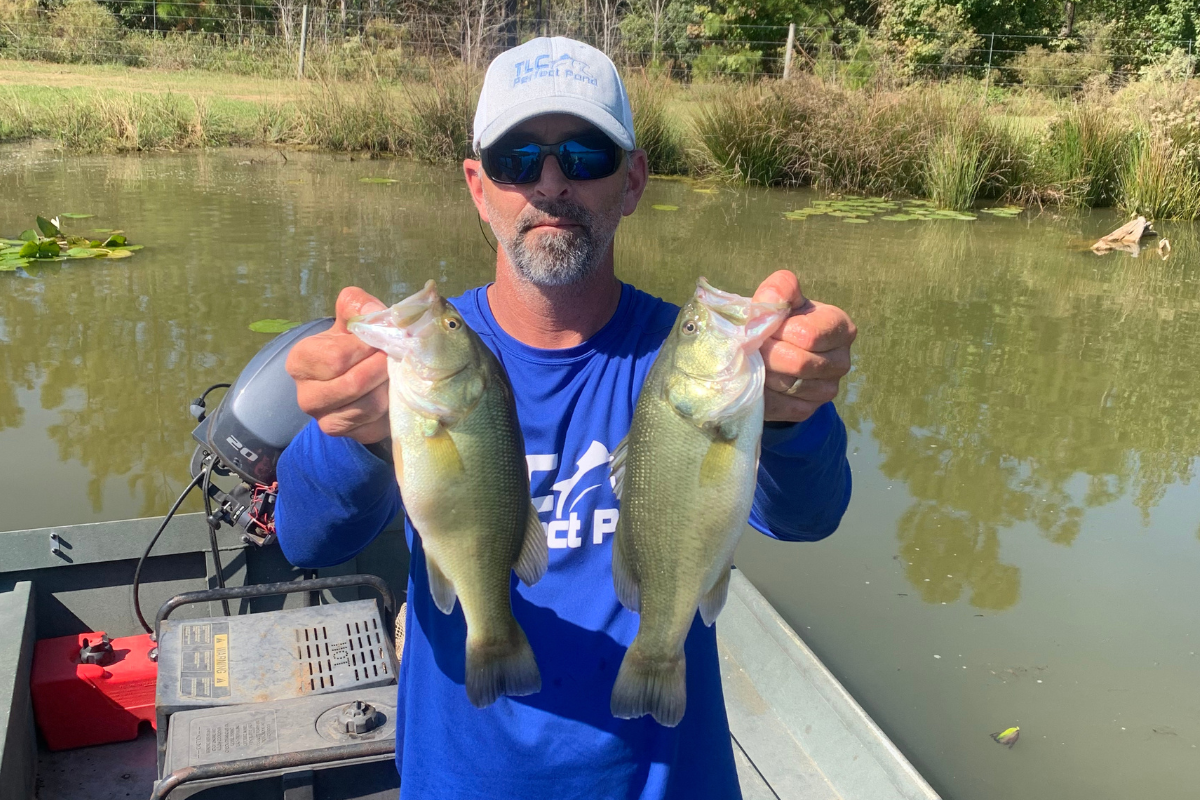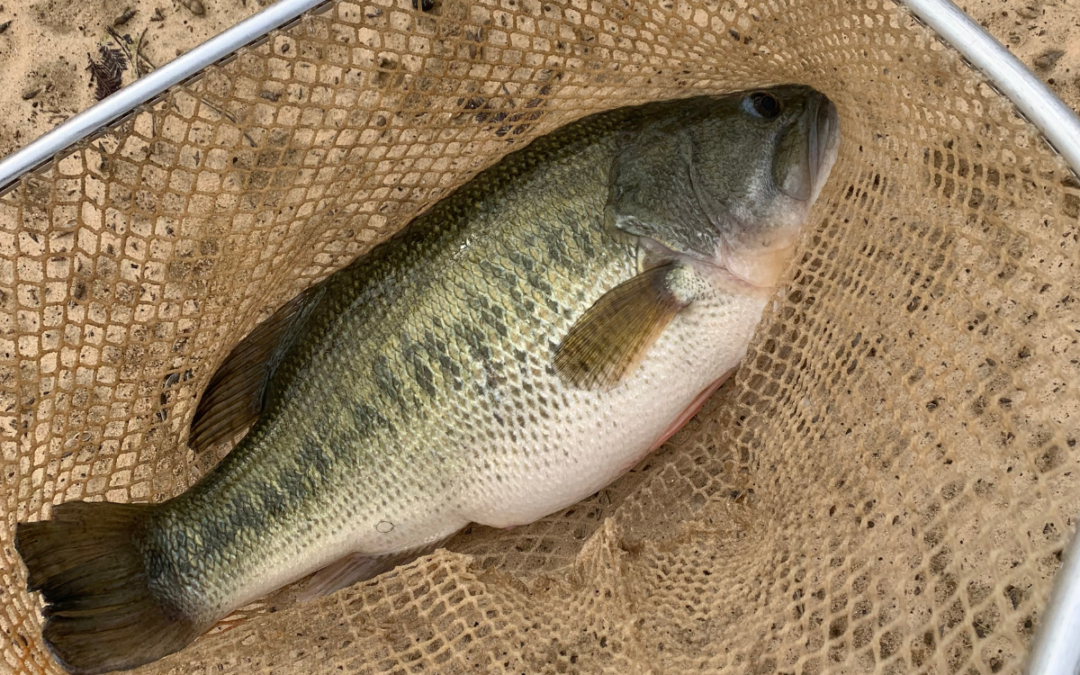If you talk to 10 different pond owners, you might hear 10 different strategies they have for growing trophy bass in their ponds. Misinformation is everywhere when it comes to pond management strategies, so you have to be careful what you believe. According to the Mississippi State University, the four most important factors for growing trophy bass are growing season, genetics, age/sex, and forage. While we agree that these are important, they’re not weighted equally. Below well rank these and provide some examples from our years of experience managing ponds across south Georgia and north Florida.
1. Forage
Forage is no doubt the most important piece of the trophy bass equation. Without adequate forage, largemouth bass won’t reach the trophy size that most pond owners are seeking. Bass with limited forage won’t obtain the lengths needed for trophy size. They also won’t have have that football shape representative of a well-fed fish.
As we’ve stated on other blogs, bluegill are the most important forage species for largemouth bass. This is because they spawn multiple times a year down here and provide a consistent source of food throughout the year. We’ve never found trophy bass in a pond that didn’t have a booming bluegill population. It just doesn’t happen.
Forage diversity is also extremely important so that the predation pressure on a single forage species isn’t too high. Providing additional forage opportunities in the form of shad, shiners, crawfish, and more will diversify the diet of the bass and allow them to change feeding habits based on what is available.
The primary objective with providing forage for largemouth bass is to decrease prey competition and increase prey density. If competition for prey is too high, largemouth bass will not have enough to eat or will spend too much energy capturing prey. The prey density has to be high enough to keep all the larger bass in the pond at or above standard weight.

2. Age & Sex
Largemouth bass in a healthy pond ecosystem should get larger each year. As they get older, the increase in length from year to year will slow. But they should still be growing assuming the pond has enough for them to eat. To grow trophies, you’ll want to have a decent number of larger bass in the pond. These are the ones with trophy potential, so you want to be sure and release these if you catch them.
These larger fish are always going to be females as male largemouth bass rarely exceed 5 lbs. Besides size, sometimes male and female bass can be distinguished during the spring spawning season. If possible, remove the males if you catch those. This will reduce the forage competition for the larger females.
Also remove any fish that are below standard weight. If a bass looks skinny or malnourished, don’t put it back into the pond. It will only hurt the existing population as it competes with the healthy bass for food. A healthy pond should have 30-40 lbs per acre of largemouth bass removed each year. Release the ones with trophy potential and keep the skinny fish for your fish fry.
3. Growing Season
There’s a reason that a vast majority of largemouth bass records come from ponds and lakes in the southern states. Areas with longer warm seasons provide more opportunities for bass to be active, feeding, and growing. States like Florida, Georgia, California, Alabama, and Texas often grow huge bass due to the waters staying warmer longer.

4. Genetics
Genetic contributions to growing trophy bass are often overstated, but they do play a role. The simple fact is that genetics cannot overcome poor pond management practices. You can stock fish with the best genetics on the planet, but even those fish won’t grow to trophy size if they’re not managed correctly.
The Titan Bass we stock have incredible genetics that make them feed aggressively and grow 2+ lbs a year in ideal conditions. But if we stock these in a pond without adequate forage, they won’t achieve their growth rate potential. This is why we put genetics as the fourth item on this list. It’s important, but good genetics can’t overcome lack of forage or other factors on this list.
Let Up Help You Grow Trophy Bass!
If you’re having issues growing trophy bass in your pond or lake, complete this form and we’ll contact you to schedule a time to meet. We’ll perform a comprehensive population survey of predators and prey. We’ll then compile that data and make recommendations going forward. We look forward to turning your pond into a productive fishery for years to come!

